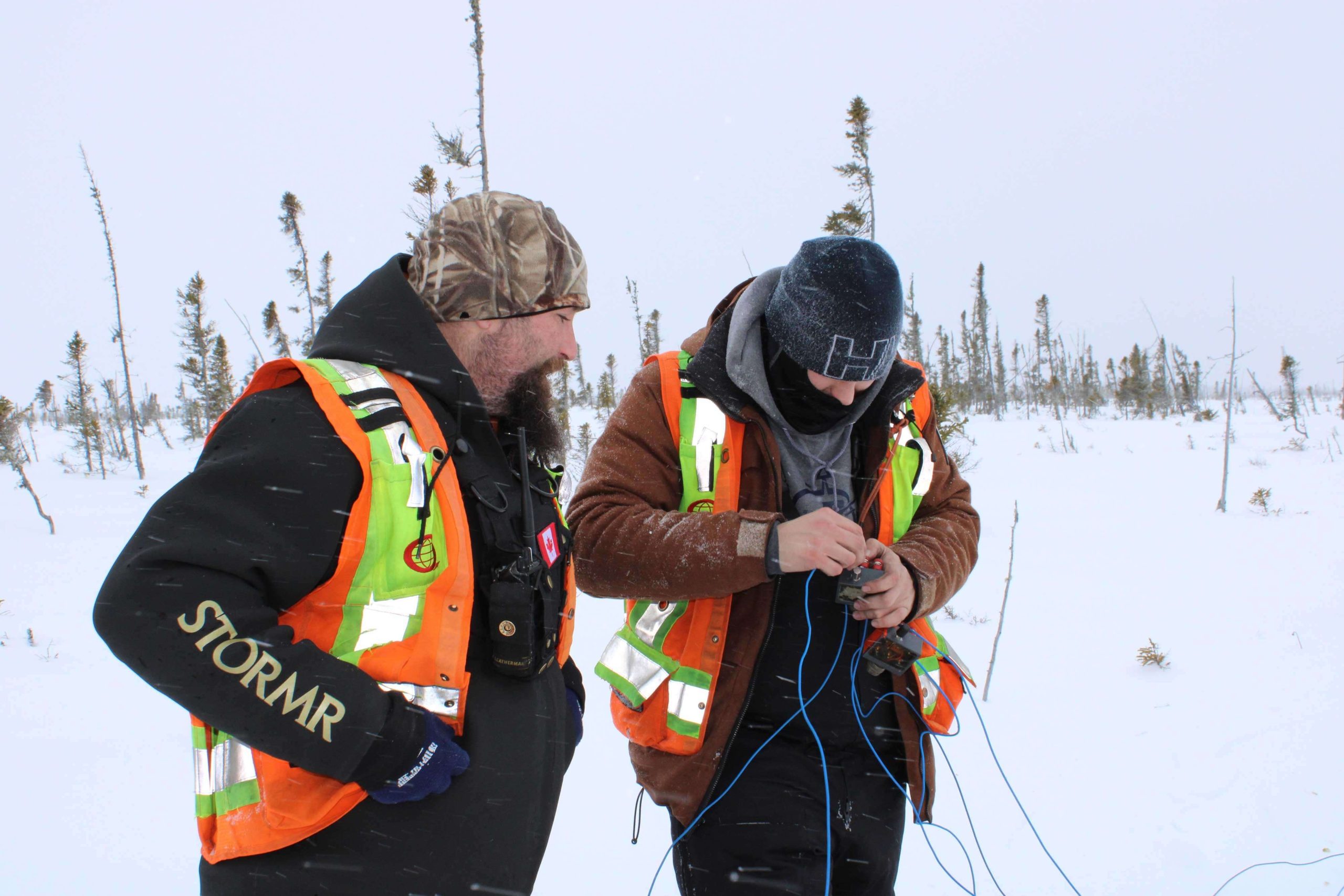We are excited that exploration work will be ramping up at Esker Site this winter and spring.
The program includes a number of geophysical surveys, which are non-invasive ways of imaging what is underground and a drilling program to test targets. The work we are doing includes ground MT (Magnetotellurics), ground gravity, and ground EM (electromagnetics) surveys.
So, what do these surveys do? Ground MT surveys measure electric and magnetic fields under the ground which may indicate potential nickel targets. They rely on naturally occurring sources of energy, like lightning storms and solar flares, as the source of energy. Ground EM surveys measure the conductivity of rock under the ground using a generator to create an electromagnetic field which penetrates the ground. Ground gravity surveys measure differences in density in rock to help identify areas which may indicate nickel targets, without disturbing the ground.
If the MT, EM or gravity surveys pick up something significant, further testing can be done using a diamond drill, which drills into the ground to collect a tube of rock (about as wide as a pop can) which is then analysed by RoF Metals geologists looking for minerals which may lead to a nickel discovery.
Our MT surveys will cover the Eagle’s Nest nickel deposit and the Blue Jay nickel occurrence with the hope of identifying new areas to drill near these targets. Drilling will take place at Blue Jay in February. Drilling around Esker to install water wells in January will allow us to test for the presence and quality of water for future development at Eagle’s Nest. In addition to our exploration programs, we’re planning on installing fuel bladders at Esker and bringing in mobile equipment (snowmobiles and ATVs) to facilitate our work at site and in the field. The fuel bladder system will allow us to reduce our carbon footprint by reducing the amount of flights needed to transport fuel to site, as well as reduce the health and safety risk of manually handling heavy fuel drums.








